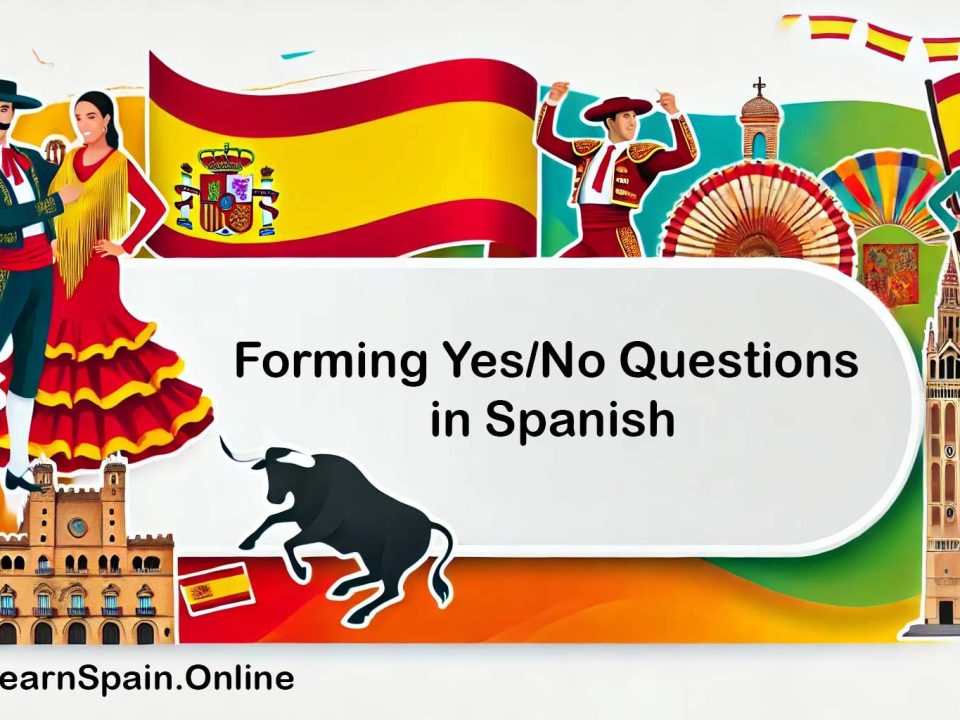
Understanding the Verb “Gustar” and Similar Verbs
August 6, 2024
Basic Sentence Structure in Spanish
August 6, 2024Understanding Simple Negation in Spanish
Negation is an essential part of any language, allowing you to express negative statements, refusals, and contradictions. In Spanish Grammar, forming simple negations is straightforward once you understand the basic rules. This guide will cover the fundamental aspects of simple negation, provide examples, and help you understand how to use it in different contexts. By the end of this article, you will be comfortable using negation in Spanish and able to incorporate it into your daily interactions.
Basic Negation with “No”
The most common way to negate a sentence in Spanish is by using the word “no”. It is equivalent to the English word “not” or “no” and is placed directly before the verb.
Examples:
- Yo no hablo español. (I do not speak Spanish.)
- Tú no comes carne. (You do not eat meat.)
- Él no tiene dinero. (He does not have money.)
- Nosotros no queremos ir. (We do not want to go.)
- Vosotros no estudiáis para el examen. (You all do not study for the exam.)
- Ellos no viven aquí. (They do not live here.)
Using “No” in Questions
Negation can also be used in questions. Simply place “no” before the verb to form a negative question.
Examples:
- ¿No hablas inglés? (Don’t you speak English?)
- ¿No comes pescado? (Don’t you eat fish?)
- ¿No tiene él un coche? (Doesn’t he have a car?)
- ¿No queremos nosotros participar? (Don’t we want to participate?)
- ¿No estudiáis para el examen? (Don’t you all study for the exam?)
- ¿No viven ellos en esta ciudad? (Don’t they live in this city?)
Using “No” with Reflexive Verbs
When using reflexive verbs, place “no” before the reflexive pronoun and the verb.
Examples:
- Yo no me levanto temprano. (I do not get up early.)
- Tú no te duchas por la mañana. (You do not shower in the morning.)
- Ella no se maquilla todos los días. (She does not put on makeup every day.)
- Nosotros no nos peinamos antes de salir. (We do not comb our hair before going out.)
- Vosotros no os acostáis tarde. (You all do not go to bed late.)
- Ellos no se preocupan por el examen. (They do not worry about the exam.)
Double Negation
Spanish often uses double negation, especially with words like “nada” (nothing), “nadie” (nobody), “nunca” (never), and “ninguno” (none). In these cases, “no” is placed before the verb, and the negative word follows.
Examples:
- No tengo nada. (I have nothing.)
- No veo a nadie. (I don’t see anyone.)
- No voy nunca. (I never go.)
- No hay ninguno. (There is none.)
Common Negative Words and Phrases
Here are some common negative words and phrases used in Spanish:
- Nada: Nothing
- Nadie: Nobody
- Nunca: Never
- Jamás: Never (emphatic)
- Ninguno/a: None, not any
- Tampoco: Neither, not either
- Ni: Nor, neither
Examples:
- Nada
- No tengo nada que decir. (I have nothing to say.)
- Nadie
- Nadie sabe la respuesta. (Nobody knows the answer.)
- Nunca
- Nunca he estado en España. (I have never been to Spain.)
- Jamás
- No lo haré jamás. (I will never do it.)
- Ninguno/a
- No tengo ninguna idea. (I have no idea.)
- Tampoco
- No me gusta el café, tampoco el té. (I don’t like coffee, nor tea.)
- Ni
- No tengo ni tiempo ni dinero. (I have neither time nor money.)
Practice Exercises
To reinforce your understanding of simple negation in Spanish, try these exercises:
- Translate the Sentences: Translate the following sentences into Spanish:
- I do not like cheese.
- He never goes to the gym.
- They have nothing to eat.
- We do not speak French.
- She does not see anyone.
- Complete the Sentences: Fill in the blanks with the correct negative word:
- No hay __ en la nevera. (There is nothing in the fridge.)
- No conozco a __ aquí. (I do not know anyone here.)
- No voy a la fiesta, __. (I am not going to the party either.)
- No quiero __ de beber. (I do not want anything to drink.)
- No estudio __. (I never study.)
- Correct the Sentences: Correct the following sentences to include negation:
- Tengo dinero.
- Veo a alguien en el parque.
- Voy siempre a la playa.
- Hay algo interesante en la televisión.
- Ella estudia todos los días.
- Form Negative Questions: Turn the following statements into negative questions:
- Hablas español.
- Comes carne.
- Él tiene un coche.
- Nosotros queremos participar.
- Ellos viven en esta ciudad.
Additional Tips for Learning Negation
- Practice Regularly: Use negation in your daily interactions to become more comfortable with their forms.
- Engage with Media: Watch Spanish videos, listen to music, or read articles that use negation to hear the vocabulary in context.
- Create Flashcards: Make flashcards with negative words and their meanings to reinforce your memory.
- Use Apps: Utilize language learning apps that focus on negation and practice with interactive exercises.
Conclusion
Understanding and mastering simple negation is essential for effective communication in Spanish Grammar. By familiarizing yourself with the basic rules and practicing their usage in sentences, you will enhance your ability to express negative statements accurately. Regular practice and application of these concepts will help solidify your understanding and build your confidence in using negation fluently. ¡Buena suerte! (Good luck!)
Links:
Spanish Grammar
Spanish Vocabulary
Spanish Listening
Spanish Stories


